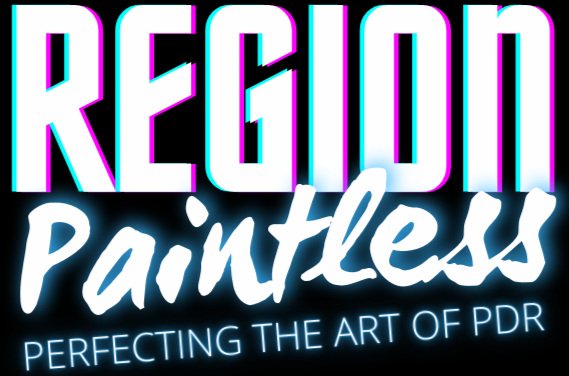Professional Paintless Repair Solutions
How does PDR work?
PDR works by using specialized tools to massage the dent from the inside out. The technician gains access to the backside of the dent and uses these tools to carefully manipulate the metal back into its original shape. The process requires a skilled technician with an eye for detail and precision.
Benefits of PDR
Cost-effective: PDR is typically less expensive than traditional auto body repair methods, which can involve sanding, filling, and painting the damaged area.
Time-efficient: PDR is usually a much faster process than traditional auto body repair methods. Most dents can be repaired in a matter of hours, whereas traditional repair methods can take days.
Preserves original finish: Since PDR doesn't require sanding or painting, the original finish of the vehicle is preserved. This helps maintain the value of the car and avoids the need for color-matching.
Environmentally friendly: PDR is an eco-friendly option for auto body repairs because it doesn't involve any harmful chemicals or paints.
Limitations of PDR
PDR is a great option for repairing small to medium-sized dents and dings. However, it may not be suitable for larger, more severe damage. In some cases, the paint may also be damaged beyond repair, requiring a traditional auto body repair.
PDR is a cost-effective, time-efficient, and environmentally friendly method for repairing dents and dings on a vehicle's body. It is a great option for small to medium-sized damage and can help preserve the vehicle's original finish. However, it may not be suitable for larger, more severe damage, and may require traditional auto body repair. If you're in need of auto body repair, consider PDR as a potential option.
“What is PDR?”
PDR or Paintless Dent Repair is a method of removing minor dents and dings without removing any paint from the vehicle. This is done by very patiently massaging the dent out from the back of the panel using specialized tools.
What are the benefits of PDR?
The most important benefit is quality. This method is the closest you can get to the dent never happening in the first place. No grinding, bondo, fillers, or primers are needed because your original factory paint is not disturbed. There are no problems with filler or paint shrinkage months after the repair as is typical with most body shop repairs.
Cost is also a major benefit of PDR. Repairs are typically between one-quarter to one-third the cost of conventional dent repair.
Time savings is yet another advantage. Many dents can be fixed in less than an hour. Hail damage is typically fixed in one day with PDR. A body shop may take 2-3 weeks for the same type of damage.
Environmental concerns are another benefit of PDR. Since this process keeps the original factory paint on your vehicle, there is no need for the paint, chemicals, or other toxins that are used extensively in body shops when repairing dents. PDR is 100% environmentally friendly.
How do I find a quality PDR technician?
One way is to look for a NAPDRT member technician. NAPDRT is a not-for-profit organization that is on the forefront of setting nationally accepted standards for our industry. NAPDRT technicians agree to a set of standards and to be bound by a CSI (Consumer satisfaction Index ).
Will my paint be damaged?
No. Today’s factory paints are very flexible and will not be damaged in any way by this process. PDR is the only way to repair a dent and still keep your factory paint.
Will my dents be 100% gone?
On minor dents, in most cases, yes. The deeper the dent, the more difficult it is to repair. Even on larger dents, most people are amazed at the results.
Will my dents come back?
Absolutely not. Once a dent has been removed properly with PDR, it never comes back.
Can any dent be fixed?
No. The most important factors in determining if a dent can be repaired by PDR are depth and location. Dents the size of a dinner plate or larger can be fixed successfully, as long as they are not too deep. On the other hand, some dents that are as small as a dime but very deep, cannot be fixed using PDR because the metal is too stretched. Cracked paint can also be an indication that a dent is too deep.
The most common dents fixed are the size of a golf ball and under. Most (about 95%) minor dents can be repaired. About 5% of minor dents can’t be fixed due to depth or location. Areas such as some quarter panel opening lips, some forward areas of heavily braced hoods, or the very edges of some panels are examples of bad locations.



